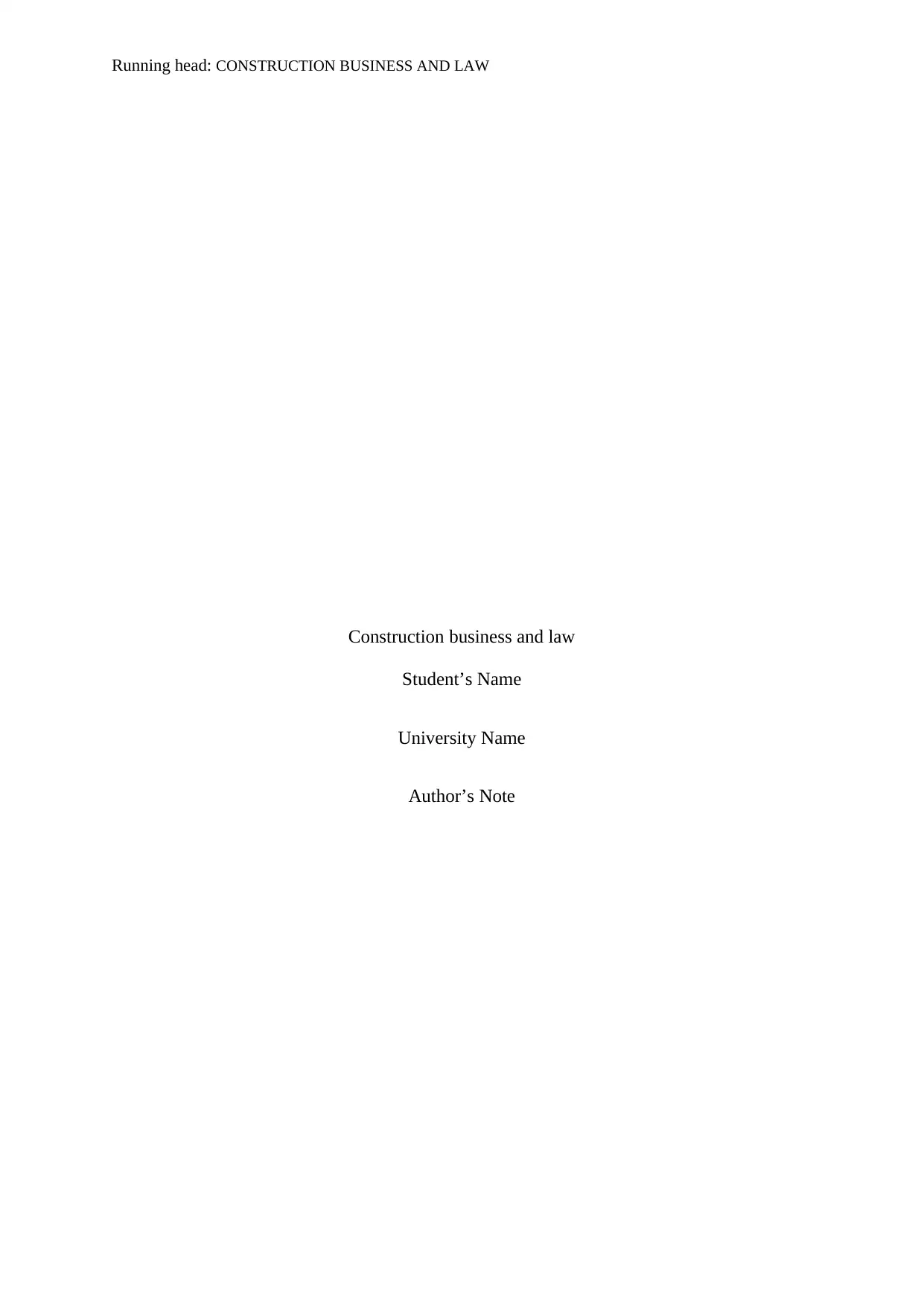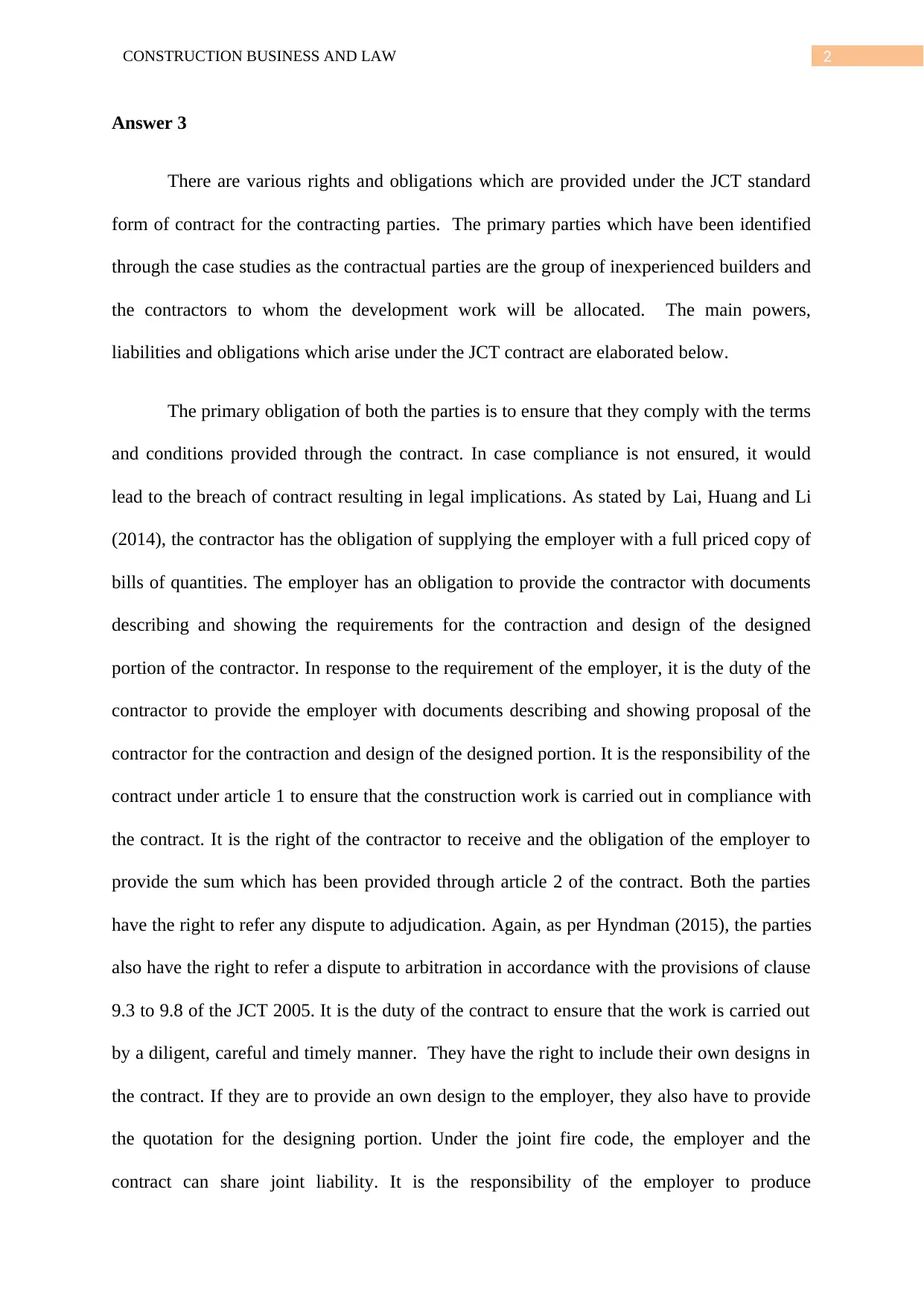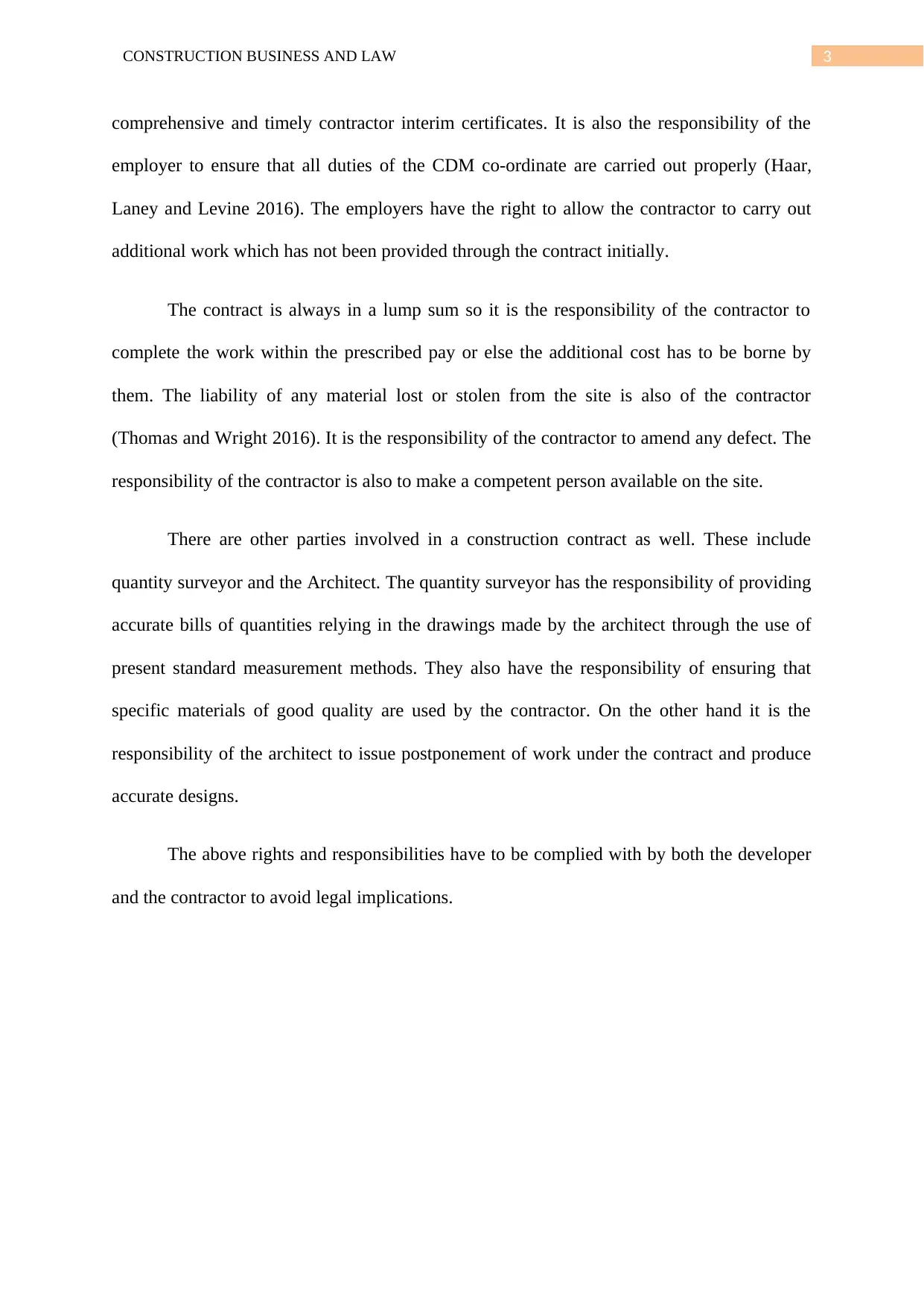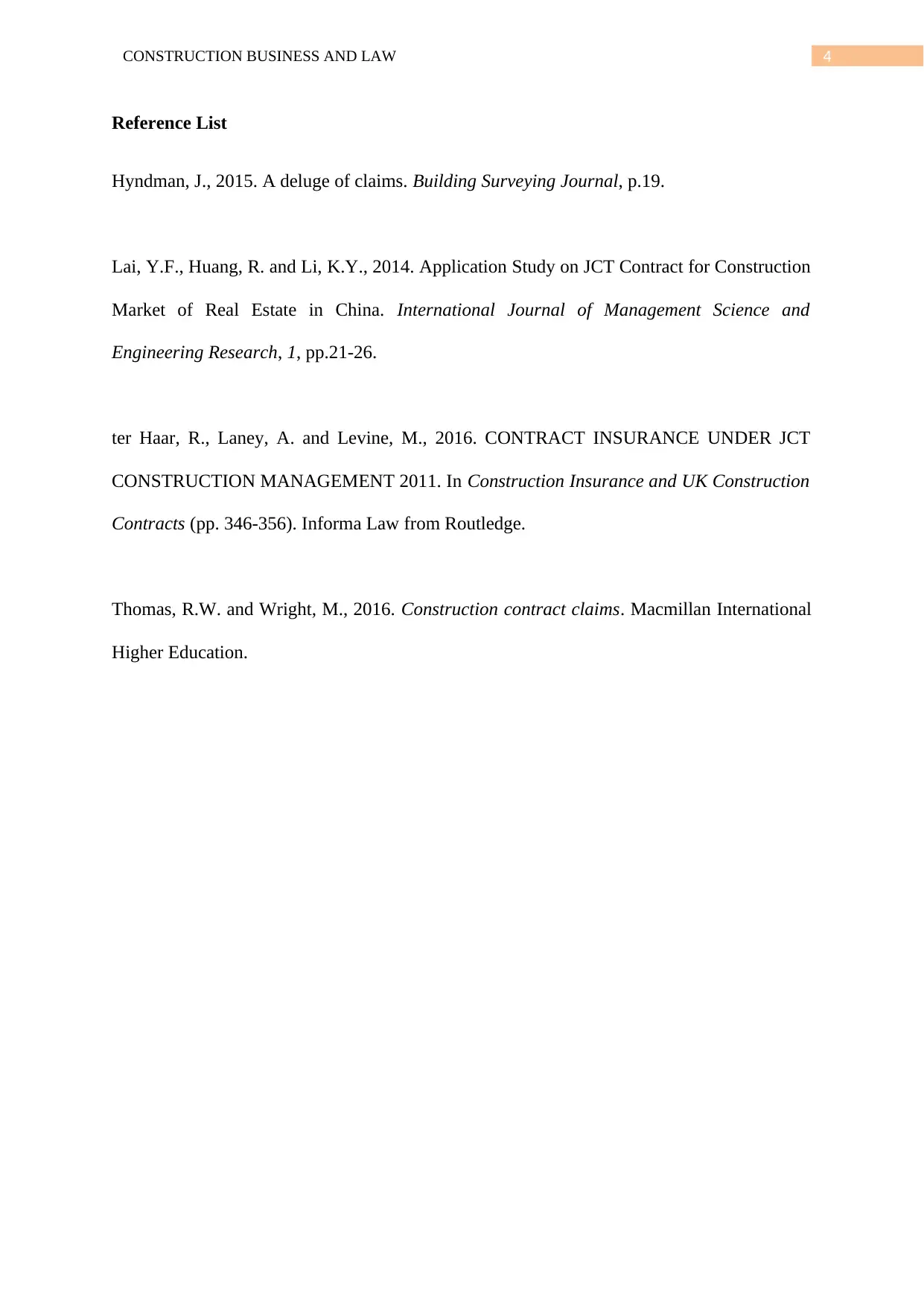Construction Business and Law: JCT Contract Obligations Analysis
VerifiedAdded on 2023/04/20
|4
|825
|166
Report
AI Summary
This report provides a comprehensive analysis of the rights, obligations, and liabilities of parties involved in a construction project under the JCT (Joint Contracts Tribunal) standard form of contract, particularly focusing on the roles of the developer (inexperienced builders in this case) and the contractors. It elaborates on the primary obligations of both parties to comply with the contract terms, the contractor's obligation to supply priced bills of quantities, and the employer's obligation to provide necessary design and construction requirements. The report also discusses the contractor's responsibilities for carrying out work diligently, including their own designs, adhering to joint fire codes, and addressing defects. Furthermore, it touches on the employer's duties related to interim certificates and CDM coordination, as well as the roles and responsibilities of other parties like quantity surveyors and architects, emphasizing the importance of compliance to avoid legal implications. The analysis relates question 3 to other questions within the assignment brief.
1 out of 4











![[object Object]](/_next/static/media/star-bottom.7253800d.svg)